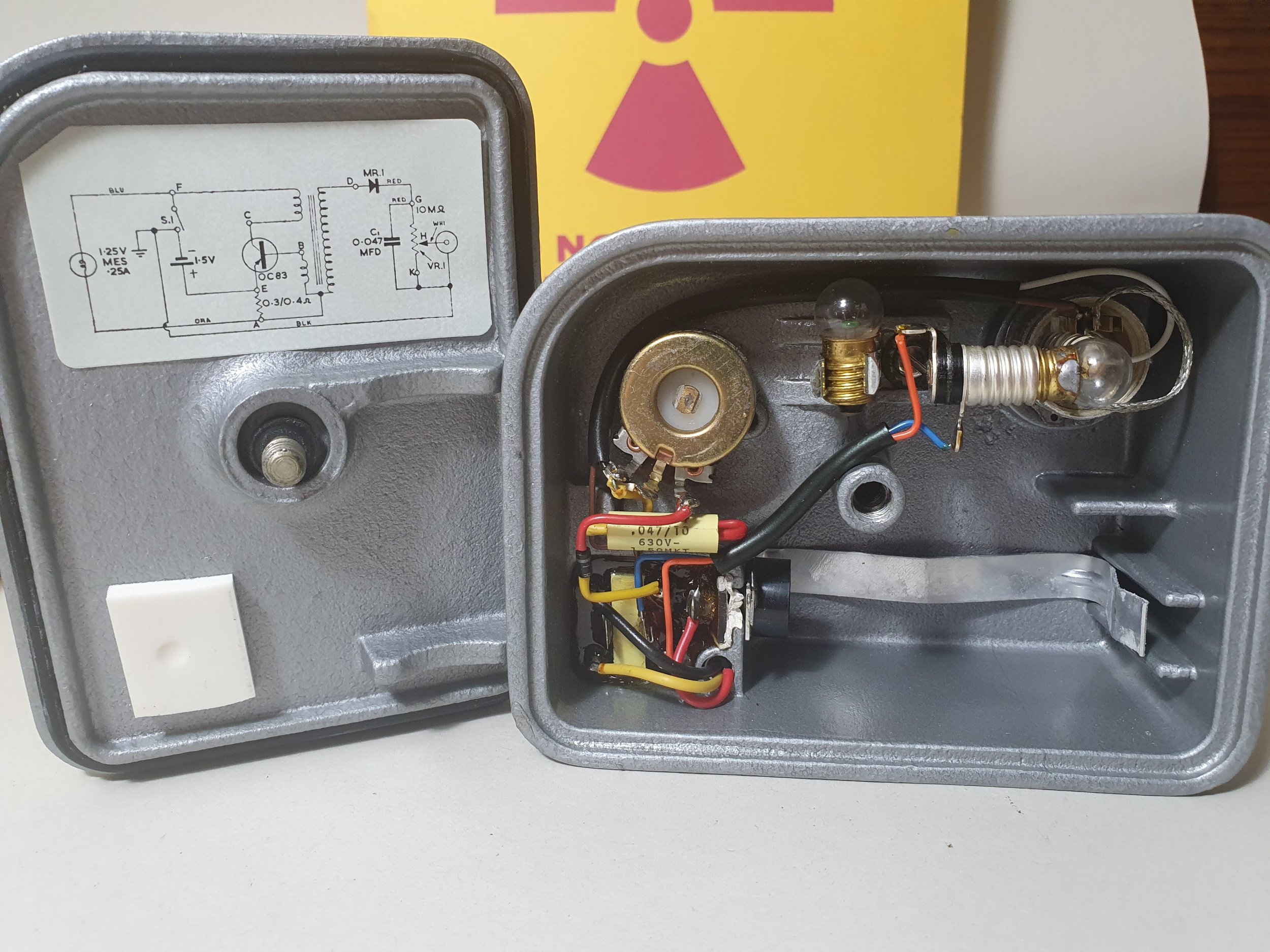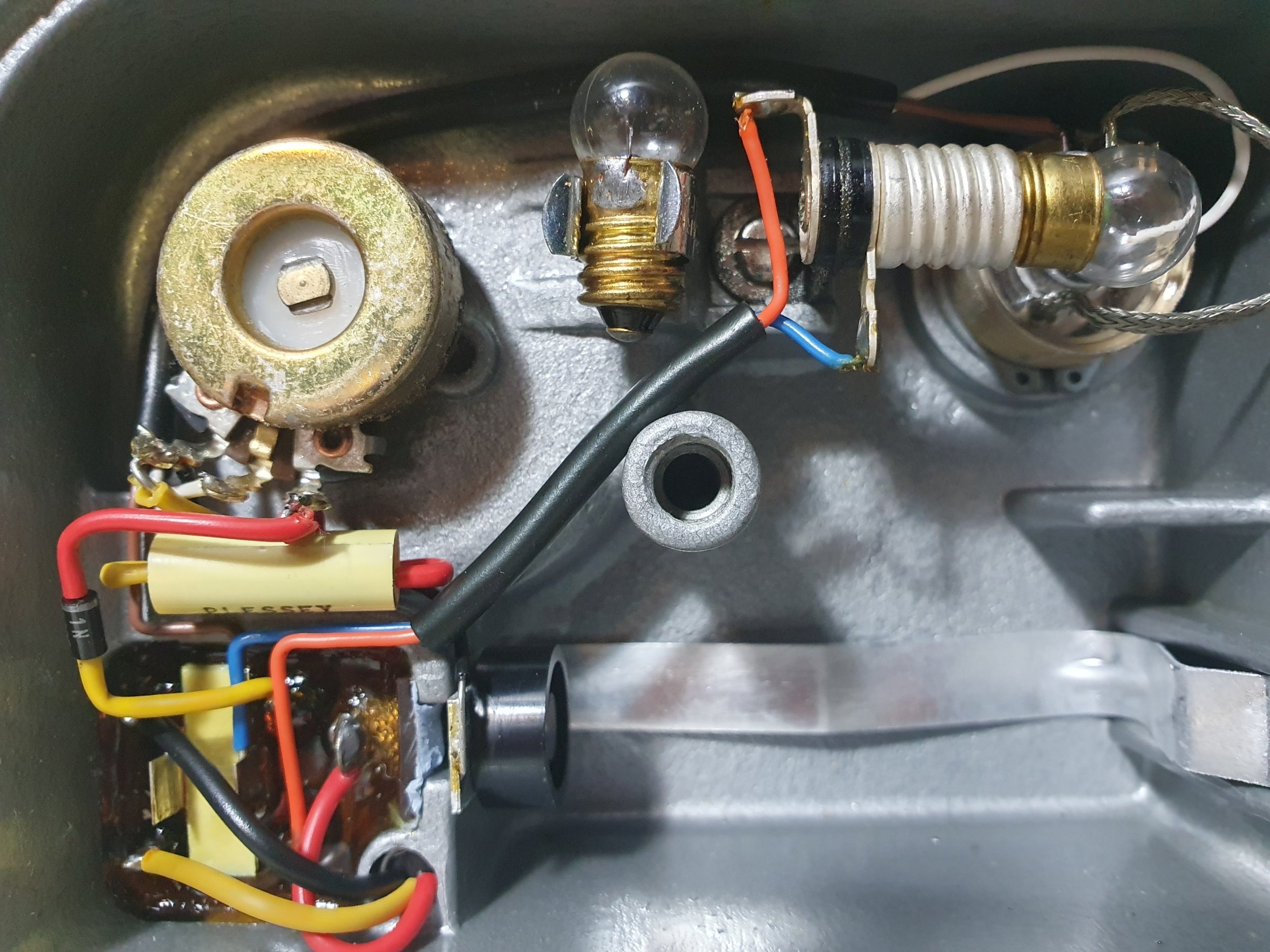Kit includes:
x1 FH Quartz Fibre Highly Sensitive Low Range 0-200 mR (2 mSv) (2 mGy) Dosimeter
x1 R.A. Stephens Quartz Fibre High Range 0-200 Centigray (0-2000 mSv, 2 Sv) Dosimeter
x1 Dosimeter Charger (choose either MOD STEPHEN or CDV-750) Requires 1 D cell or 1.5v equivalent with adaptor
Stephen charger is NOS and comes with charging manual, CDV is used
Calibrated*, Leak Tested and Zeroed.
Extra dosimeters can be added:
1. 'Green' 1000 mSv, ionisation chamber is lead shielded giving a more true gamma only dose.
2. 'Gold' No.1 Canada 200 R
3. 'Gold' No. 2 CDV 200 R
4. 'Black' No.1 Canada 10 R
5. 'Black' No.2 Canada 600 R
6. 'Gold' FH 200 mR
7. 'Grey' Stephen 200 cGy
A personal dosimeter is a device that measures the amount of ionising radiation a person has been exposed to. Dosimeters report a dose, which is the absorbed radiation energy, in greys (Gy) or equal dose in sieverts (Sv) or roentgens (R). The pocket or pen dosimeter contains an ionisation chamber which is considered to be one of the most sensitive and accurate types of radiation detectors.
Direct-reading dosimeters such as these measure gamma and x-ray radiation exposure. They are:
Easy to use, personal exposure can be read immediately and reset at anytime with the use of a charger
Rugged, reliable and accurate
Hermetically sealed meaning they are dust and immersion proof
Battery free
EMP proof
The personal, pen-style dosimeter clips easily to your pocket or a specific object to measure the accumulated dose or quantity of gamma and x-ray radiation of an energy range from 50 KeV to 3 MeV. A dosimeter roughly consists of a conductive-fiber electroscope with a thin wall to allow the penetration of radiation. Inside the dosimeter, the fiber moves across the visible scale to display the level of radiation exposure. Readings are easily displayed by holding the dosimeter up to a light source to view the scale. A charger is used to zero the dosimeter and reset the scale for repeated use.
Recording your absorbed doses are extremely important, frequent and continued exposure can quickly add up and lead to an accumulated personal dose over a permissible threshold.
Depending on the intensity of the radiation a dosimeter may be used as a sort of rate meter, inferring from the absorbed dose the dosimeter receives in a known amount of time can give you the dose rate.
I.e., if the dosimeter reads:
100 cGy (1 Gy) (1000 mSv; 1 Sv) (100 R) at one hour, the dose rate is about 100 cGy/h; 1 Gy/h (1000 mSv/h; 1 Sv/h) (100 R/h).
3.6 cGy (36 mSv) (3.6 R) at 15 minutes, the dose rate is about 14.4 cGy/h (144 mSv/h) (14.4 R/h)
1 cGy (10 mSv) (1 R) at 24 hours, the dose rate is about 420 uGy/h (420 uSv/h) (42 mR/h)
10 mR (100 uSv) (100 uGy) at 15 minutes, the dose rate is about 40 mR/h (400 uSv/h) (400 uGy/h)
23 mR (230 uSv) (230 uGy) at 5 hours, the dose rate is about 4.6 mR/h (46 uSv/h) (46 uGy/h)
168 cGy (1.68 Gy) (1068 mSv; 1.68 Sv) (168 R) at 15 minutes, the dose rate is about 672 cGy/h; 6.72 Gy/h (6.72 Sv/h) (672 R/h)
*These examples do not account for the decay rate (7-10 Rule) from nuclear fallout one would experience but it is still a useful method nonetheless.
Dosimeters will discharge or 'leak' over time (the needle will move upscale). A dosimeter charger is necessary to re-zero it.
MoD/CD surplus will have surface marks, scratches and signs of rust, this does not affect the operation or integrity of the dosimeter.
* Calibration verification performed with x-ray machine and readings compared to multiple of the same device to ensure accuracy. Intended for hobby use.































